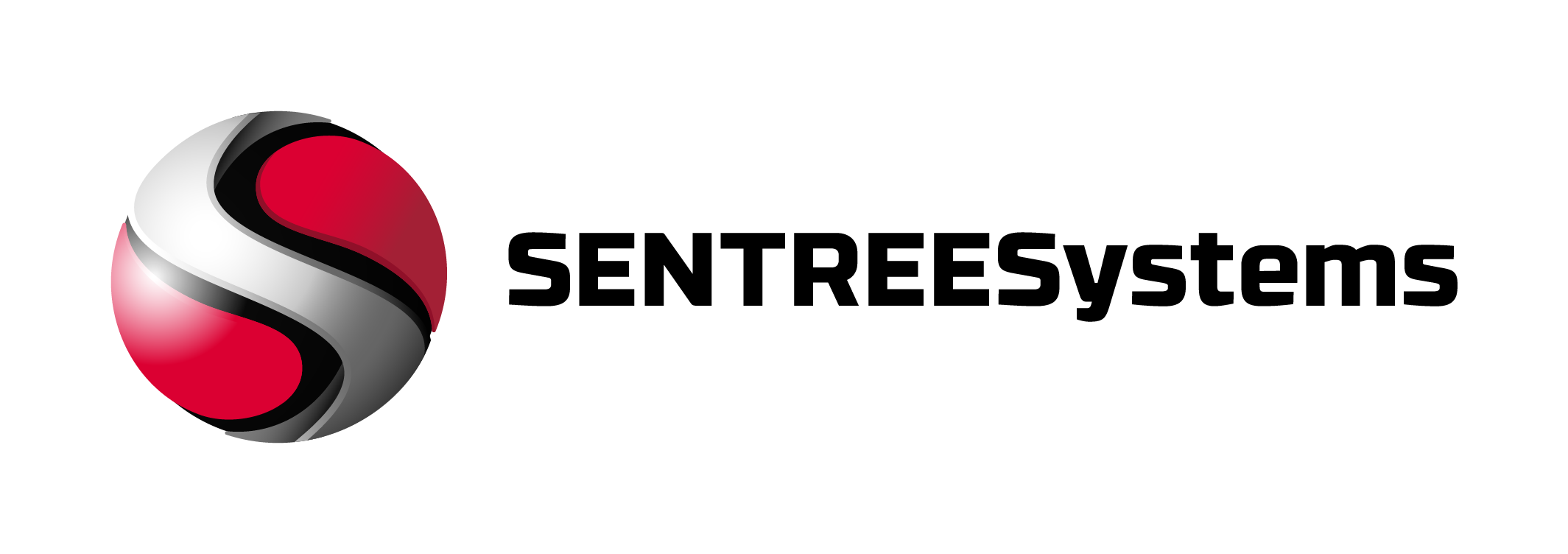Most proactive risk management is crucial to minimize the impact of these threats and ensure smooth operation. Risk assessment and analysis is a systematic process used to identify, analyze, and prioritize potential threats. It involves brainstorming potential negative events, evaluating their likelihood and impact, and ranking them based on severity. Different types of assessments use qualitative or quantitative methods. Conducting regular assessments offers several benefits – proactive threat identification and mitigation, improved decision-making regarding resource allocation and security investments, enhanced compliance with regulations, and increased awareness of potential vulnerabilities. While individuals can benefit from basic assessments, organizations often require the expertise of experienced cybersecurity professionals. Companies like Sentree Systems, led by Kevin Mabry, a cybersecurity and compliance expert, can provide comprehensive risk assessments tailored to specific needs. These professionals can help identify and analyze potential threats, develop effective mitigation strategies, and ensure a strong security posture. By understanding the importance of risk assessment and analysis and taking proactive steps to identify and address potential threats, you can significantly improve your overall security and resilience. Investing in risk management today can save you time, money, and resources in the long run.
Perspectives on transforming cybersecurity may further enhance your understanding of this critical topic.
Key Takeaways:
- Proactive risk management is necessary in today’s interconnected world to minimize the impact of threats and ensure smooth operation.
- Risk assessment and analysis is a systematic process used to identify, analyze, and prioritize potential threats by evaluating their likelihood and impact.
- Regular assessments offer benefits such as proactive threat identification, improved decision-making, enhanced compliance, and increased awareness of vulnerabilities.
- While individuals can benefit from basic assessments, organizations often require experienced cybersecurity professionals like those at Sentree Systems, led by Kevin Mabry.
- These professionals can help identify and analyze threats, develop effective mitigation strategies, and ensure a strong security posture tailored to specific needs.
- By understanding the importance of risk assessment and analysis and taking proactive steps to address threats, overall security and resilience can be significantly improved.
- Investing in risk management today can lead to long-term savings in time, money, and resources by mitigating potential risks effectively.

The Anatomy of Risk: Understanding Potential Threats
Some risks are inherent in today’s interconnected world, where individuals and organizations must navigate a complex landscape fraught with potential dangers. Understanding these risks is crucial for effective risk management and resilience.
The Cyber Menace: From Cyberattacks to Data Breaches
Data breaches and cyberattacks pose a significant threat to individuals and organizations alike. Cybercriminals exploit vulnerabilities in systems to steal sensitive information, disrupt operations, and cause financial harm. Businesses must be vigilant in implementing robust cybersecurity measures to safeguard their data and infrastructure.
Regular security audits and employee training are crucial components of a comprehensive cybersecurity strategy. By staying informed about the latest threats and best practices, organizations can better protect themselves against evolving cyber risks.
The Unpredictable Forces: Natural Disasters and Their Aftermath
Disasters such as hurricanes, earthquakes, and floods can have devastating consequences for businesses, leading to property damage, supply chain disruptions, and financial losses. Preparedness and resilience planning are key to minimizing the impact of natural disasters and ensuring business continuity in their aftermath.
A proactive approach to risk management, including regular risk assessments and disaster recovery drills, can help organizations mitigate the impact of natural disasters and enhance their ability to respond effectively in times of crisis.
A comprehensive understanding of the potential risks that individuals and organizations face is crucial for effective risk management. By identifying and addressing threats such as cyberattacks, natural disasters, and human error, entities can enhance their security posture and resilience in an increasingly interconnected world.
The Human Factor: Error and Its Role in Operational Risk
Factors like human error and negligence can introduce vulnerabilities into systems and processes, leading to operational disruptions and security breaches. Educating employees about cybersecurity best practices and establishing clear protocols for handling sensitive information are critical steps in mitigating human-caused risks.
Organizations must foster a culture of accountability where employees understand the importance of security protocols and are encouraged to report any potential issues promptly. By addressing the human factor in risk management, businesses can strengthen their defenses and minimize the likelihood of costly errors.
Types of Risk Assessments: Qualitative and Quantitative Approaches
Keep in mind that risk assessments can be conducted using qualitative or quantitative methods. While qualitative approaches focus on the narrative evaluation of threats, quantitative methods involve the use of statistical measures to analyze risks. Understanding the differences between these two approaches can help organizations choose the most appropriate method for their specific needs.
| Qualitative Methods | Quantitative Methods |
| Focus on narrative evaluation | Utilize statistical measures |
| Subjective assessment of risks | Objective analysis of risks |
| Evaluation based on expert judgment | Data-driven decision-making |
| Useful for identifying potential threats | Provides numerical risk values |
| Qualitative risk matrices | Quantitative risk models |
Qualitative Methods: A Narrative Approach to Threat Evaluation
An vital aspect of qualitative risk assessments is the narrative approach to threat evaluation. Instead of relying solely on numerical data, qualitative methods focus on the subjective assessment of risks based on expert judgment. This approach helps organizations identify potential threats and vulnerabilities that may not be easily quantifiable. By using qualitative risk matrices, organizations can prioritize risks based on their severity and impact, enabling them to develop targeted mitigation strategies.
Qualitative methods are valuable for organizations looking to gain a comprehensive understanding of their risk landscape. By incorporating expert insights and subjective assessments, organizations can uncover hidden vulnerabilities and prioritize risks effectively. Proactive identification and evaluation of threats through qualitative methods can enhance decision-making processes and strengthen overall risk management strategies.
Quantitative Methods: The Use of Statistical Measures in Risk Analysis
Methods that involve the use of statistical measures in risk analysis are known as quantitative approaches. These methods provide organizations with numerical risk values that help in objective decision-making processes. By analyzing data-driven insights, organizations can prioritize risks based on their potential impact and likelihood, enabling them to allocate resources effectively. Quantitative risk models offer a structured approach to risk analysis, allowing organizations to create detailed risk profiles and scenarios.
Measures such as probability distributions, correlation analysis, and Monte Carlo simulations are commonly used in quantitative risk assessments. These statistical tools provide organizations with a deeper understanding of their risk exposure and help in developing robust risk mitigation strategies. By utilizing quantitative methods, organizations can enhance their risk management capabilities and improve overall resilience to potential threats.
After examining both qualitative and quantitative methods, organizations can choose the most suitable approach based on their specific requirements and operational environment. Each method offers unique benefits and challenges, and a combination of both approaches may provide a more comprehensive understanding of risks. Importantly, organizations should continuously evaluate and update their risk assessment methodologies to adapt to evolving threats and maintain a proactive risk management strategy.
The Step-by-Step Guide to Proactive Risk Management
Despite the interconnected nature of today’s world, proactive risk management is imperative to mitigate potential threats and ensure operational continuity. Risk assessment and analysis play a crucial role in identifying and prioritizing risks effectively.
| Identification: Brainstorming Potential Negative Events | Analysis: Evaluating Likelihood and Impact |
Risk assessment begins with identifying and brainstorming potential negative events that could impact individuals or organizations. This step involves considering various scenarios, including cyberattacks, data breaches, natural disasters, and human errors. | Risk analysis involves evaluating the likelihood of each identified threat occurring and assessing its potential impact on the operations. This step helps in understanding the magnitude of the risks and their implications. |
Identification: Brainstorming Potential Negative Events
Risk assessment starts with identifying and brainstorming potential negative events that could pose a threat. By considering a wide range of scenarios, individuals and organizations can prepare for various eventualities and strengthen their resilience.
Risk assessment involves not only recognizing existing vulnerabilities but also anticipating emerging threats to stay ahead of potential risks and implement proactive measures.
Analysis: Evaluating Likelihood and Impact
Risk analysis is a critical step in the risk management process, as it helps in quantifying the likelihood of risks materializing and assessing their potential impact. This information is vital for making informed decisions and allocating resources effectively.
By evaluating the likelihood and impact of each risk, individuals and organizations can prioritize their response strategies and focus on mitigating the most severe threats first.
Analysis: Evaluating Likelihood and Impact: Understanding the probability and consequences of identified risks is imperative for effective risk management. By assessing the likelihood and impact of potential threats, organizations can develop targeted mitigation strategies and enhance their overall resilience.
Prioritization: Ranking Based on Severity
Prioritization is a crucial step in proactive risk management, where risks are ranked based on their severity and potential impact on the operations. By prioritizing risks, individuals and organizations can focus on addressing the most critical threats first.
Potential risks are prioritized based on their likelihood of occurrence and the level of impact they could have on the organization. This systematic approach ensures that resources are allocated efficiently to address the most significant threats.
Prioritization: Ranking Based on Severity: Ranking risks based on severity helps in directing resources towards mitigating the most critical threats first. By prioritizing effectively, organizations can strengthen their risk management strategies and enhance their overall security posture.
Factors Influencing Risk Assessment and Management
Many factors influence risk assessment and management in today’s interconnected world. Technological advancements and evolving threats play a significant role in shaping the landscape of potential risks that individuals and organizations face. Regulatory requirements and compliance pressures also contribute to the challenges of effective risk management.
Technological Advancements and Evolving Threats
Management of risks is directly impacted by the rapid pace of technological advancements and the ever-evolving nature of cyber threats. As technology continues to advance, new vulnerabilities emerge, creating opportunities for cybercriminals to exploit. Threat actors are becoming more sophisticated in their methods, making it necessary for organizations to stay ahead of the curve in terms of cybersecurity measures.
With the rise of artificial intelligence and Internet of Things devices, the attack surface for cyber threats has expanded significantly. Organizations must adapt their risk management strategies to address these emerging technologies and the associated risks they bring. Regular updates and patches, along with employee training on cybersecurity best practices, are crucial in mitigating these evolving threats.
Regulatory Requirements and Compliance Pressures
Factors such as regulatory requirements and compliance pressures also play a crucial role in shaping risk assessment and management practices. Organizations across various industries are subject to a growing number of regulations aimed at protecting sensitive data and ensuring privacy. Non-compliance can lead to severe penalties, reputational damage, and loss of customer trust.
Evolving regulatory landscapes, such as the General Data Protection Regulation (GDPR) and the California Consumer Privacy Act (CCPA), require organizations to implement robust data protection measures and privacy controls. Failure to comply with these regulations can have far-reaching consequences, underscoring the importance of incorporating regulatory requirements into risk management strategies.
Though the challenges posed by technological advancements and regulatory requirements can be daunting, a proactive approach to risk assessment and management is necessary in navigating these complexities and safeguarding against potential threats.
Tips for Effective Risk Management
All individuals and organizations must prioritize proactive risk management to shield themselves from various threats. By following these crucial tips, you can enhance your overall security posture and resilience.
Regular Assessments: Timing and Frequency
Risk assessments should be conducted regularly to stay ahead of potential threats. The timing and frequency of these assessments are critical to accurately identify and prioritize risks. Consistent assessment intervals allow for timely detection of new threats and the evaluation of existing vulnerabilities.
By scheduling assessments on a routine basis, organizations can maintain a proactive approach to risk management. Regular evaluations enable teams to adapt to evolving threats and ensure the efficacy of mitigation strategies.
Involving Stakeholders: Building a Culture of Security Awareness
Security awareness must be ingrained within the organizational culture to enhance resilience against threats. Involving stakeholders from different departments fosters a collaborative approach to security and ensures comprehensive risk management efforts.
Engaging employees at all levels in security training and awareness programs is crucial for building a strong defense against potential risks. By fostering a culture of security, organizations can empower their teams to identify and respond to threats effectively.
Timing is key when involving stakeholders in security initiatives. By incorporating security awareness into regular training sessions and communication channels, organizations can ensure that all team members are equipped to recognize and address potential risks promptly.
The Pros and Cons of Risk Assessment
Now, let’s explore into the advantages and challenges of risk assessment to better understand its impact on individuals and organizations.
| Advantages | Challenges |
| Proactive threat identification | Resource allocation |
| Enhanced decision-making | Security investments |
| Improved compliance | Regulatory requirements |
| Increased awareness | Vulnerability exposure |
Advantages: Proactive Mitigation and Enhanced Decision-Making
For individuals and organizations, the proactive nature of risk assessment allows for early threat detection and mitigation. By identifying potential risks in advance, strategies can be developed to minimize their impact and prevent disruptions to operations. Additionally, through thorough analysis, decision-makers can prioritize security investments based on the severity and likelihood of each threat.
By integrating risk assessment into regular operations, entities can enhance their decision-making processes regarding resource allocation and security measures. This strategic approach enables informed choices that maximize protection while optimizing the use of available resources.
Challenges: Balancing Investments and Security Initiatives
Initiatives to address risks often face the challenge of balancing investments in security measures with other organizational needs. It’s critical to allocate adequate resources to mitigate risks effectively without compromising vital operational functions. Organizations must navigate the complex landscape of security priorities while ensuring sustainability and growth.
A key challenge in risk assessment is the balancing act between security initiatives and financial constraints. While investing in robust security protocols is vital, organizations must also consider the cost implications and ensure that the chosen measures align with their overall strategic goals.
The Role of Cybersecurity Experts in Organizations
Companies Like Sentree Systems: Comprehensive Risk Assessment Services
Assessment companies like Sentree Systems, led by cybersecurity and compliance expert Kevin Mabry, play a crucial role in helping organizations navigate the complex landscape of cybersecurity threats. With a deep understanding of the latest cyber risks and regulatory requirements, these professionals offer comprehensive risk assessments tailored to specific organizational needs. By leveraging their expertise, companies can proactively identify vulnerabilities, assess the potential impact of threats, and implement effective risk mitigation strategies.
Proactive risk identification and management are key to maintaining a strong security posture and safeguarding sensitive data. Sentree Systems and similar companies prioritize thorough risk assessment processes to help organizations stay ahead of evolving threats. Their in-depth analysis and strategic approach empower businesses to make informed decisions regarding cybersecurity investments and resource allocations, ultimately enhancing their overall resilience.
Experience and Expertise: Kevin Mabry and the Role of Professionals
One of the key advantages of engaging professionals like Kevin Mabry for risk assessment services is their wealth of experience and expertise in the cybersecurity domain. These experts possess in-depth knowledge of industry best practices, regulations, and emerging threats, enabling them to provide valuable insights and recommendations tailored to each organization’s unique risk profile. By partnering with seasoned professionals, companies can benefit from strategic guidance and targeted solutions that address their specific cybersecurity challenges.
Any organization looking to enhance its security posture and resilience should consider leveraging the expertise of cybersecurity professionals like Kevin Mabry. Their specialized knowledge and skill set can help businesses navigate the complexities of cybersecurity risk management effectively. By collaborating with experienced professionals, organizations can gain a competitive advantage in threat detection, mitigation, and compliance, ensuring long-term success in an increasingly digital world.
Building Resilience: Developing Effective Mitigation Strategies
For organizations looking to navigate the ever-evolving landscape of risks, developing effective mitigation strategies is vital. By proactively addressing potential threats, companies can strengthen their security posture and minimize the impact of negative events.
The Importance of Tailored Solutions for Specific Needs
Tailored solutions are crucial when it comes to risk mitigation. Not all threats are created equal, and a one-size-fits-all approach may leave vulnerabilities unaddressed. By customizing mitigation strategies to specific needs, organizations can maximize their defenses against the most pressing risks.
Understanding the unique challenges faced by a business allows for targeted risk management efforts. Working with cybersecurity professionals like Kevin Mabry from Sentree Systems ensures that organizations receive tailored solutions that address their specific vulnerabilities and enhance overall security.
Ensuring a Strong Security Posture in the Face of Adversity
One of the key pillars of effective risk management is maintaining a strong security posture in the face of adversity. This involves implementing measures that fortify defenses, detect threats early, and respond swiftly to incidents to minimize potential damage.
Ensuring a strong security posture requires a comprehensive approach that combines proactive risk assessments, robust security protocols, continuous monitoring, and regular updates to stay ahead of emerging threats. By investing in these measures, organizations can bolster their resilience and readiness to face any challenge that comes their way.
Ensuring a strong security posture is not a one-time task but an ongoing commitment to adapt to the changing threat landscape. By staying vigilant and proactive, organizations can strengthen their defenses and safeguard their operations against potential risks.

Investing in Risk Management: A Forward-Looking Approach
The Long-term Benefits: Time, Money, and Resource Savings
After conducting a thorough risk assessment and analysis, organizations can reap the long-term benefits of time, money, and resource savings. Identifying and addressing potential threats proactively can significantly reduce the impact of negative events and crises. By investing in risk management strategies, companies can save valuable time that would otherwise be spent dealing with emergencies. Moreover, efficient risk management can lead to cost savings by preventing costly data breaches, cyberattacks, and operational disruptions.
Any prudent organization understands the importance of allocating resources wisely. By embracing a forward-looking approach to risk management, companies can effectively optimize resource allocation and minimize unnecessary expenses. Investing in security measures and risk mitigation strategies today can ultimately save organizations substantial financial resources in the long run.
Case for Proactive Investment in a Secure Operational Framework
Proactive organizations recognize the critical importance of investing in a secure operational framework. By taking proactive steps to enhance security measures and resilience, companies can safeguard their operations against a wide range of threats, including cyberattacks, data breaches, and natural disasters. Moreover, adopting a proactive stance towards risk management can help organizations stay ahead of emerging threats and regulatory requirements.
Operational efficiency and security go hand in hand. Companies that invest in a secure operational framework not only protect their sensitive data and valuable assets but also demonstrate a commitment to excellence and trustworthiness in the eyes of customers and stakeholders. By prioritizing risk management and security, organizations can lay a solid foundation for sustainable growth and success.

To wrap up
Presently, in today’s interconnected world, both individuals and organizations are constantly exposed to a myriad of risks ranging from cyberattacks to natural disasters. Proactive risk management is important to mitigate the impact of these threats and ensure smooth operations. Risk assessment and analysis play a critical role in this process by systematically identifying, analyzing, and prioritizing potential risks. By evaluating the likelihood and impact of negative events, individuals and organizations can rank these threats based on severity, using either qualitative or quantitative methods.
Regular risk assessments offer numerous advantages such as proactive threat identification, informed decision-making on security investments, adherence to regulatory requirements, and increased awareness of vulnerabilities. While individuals can benefit from basic assessments, organizations often require the expertise of cybersecurity professionals like Kevin Mabry from Sentree Systems. These experts can provide customized risk assessment services, helping to identify and analyze threats, develop mitigation strategies, and strengthen overall security posture. By recognizing the importance of risk assessment and taking proactive measures to address potential threats, individuals and organizations can significantly enhance their security and resilience, leading to long-term benefits in terms of time, money, and resource savings.
Investing in risk management today is crucial for navigating the complex landscape of threats in today’s digital world. By understanding and implementing effective risk assessment and analysis strategies, individuals and organizations can safeguard their assets and operations against unforeseen disruptions. As the saying goes, prevention is better than cure, and in cybersecurity and risk management, this rings especially true. By staying ahead of potential risks through proactive measures, we can all contribute to creating a more secure and resilient environment for ourselves and future generations.
FAQ
Q: What is risk assessment and analysis?
A: They are systematic processes used to identify, analyze, and prioritize potential threats in today’s interconnected world.
Q: Why is proactive risk management crucial?
A: Proactive risk management is crucial to minimize the impact of threats such as cyberattacks, data breaches, natural disasters, and human error.
Q: What does risk assessment involve?
A: Risk assessment involves brainstorming potential negative events, evaluating their likelihood and impact, and ranking them based on severity using qualitative or quantitative methods.
Q: What are the benefits of conducting regular risk assessments?
A: Conducting regular risk assessments offers benefits such as proactive threat identification, improved decision-making, enhanced compliance with regulations, and increased awareness of vulnerabilities.
Q: Who can benefit from basic risk assessments?
A: While individuals can benefit from basic risk assessments, organizations often require the expertise of experienced cybersecurity professionals like Kevin Mabry from Sentree Systems.
Q: How can cybersecurity professionals help with risk assessments?
A: Cybersecurity professionals can help identify and analyze potential threats, develop effective mitigation strategies, and ensure a strong security posture for organizations.
Q: What are the long-term benefits of investing in risk management?
A: Investing in risk management today can save time, money, and resources in the long run by improving overall security and resilience in the face of potential threats.



